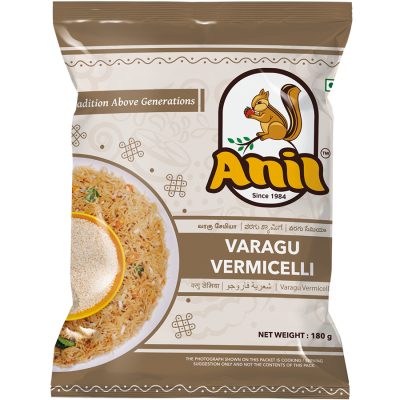Diabetes has become a highly problematic and increasingly prevalent disease worldwide. Lifestyle and dietary regulation can have a great influence on life quality for those that suffer from diabetes. Millet has been shown to be potentially beneficial in the management of diabetes. Because they are digested more slowly than refined grains, which have been stripped of the germ and bran that cover the starchy endosperm, Millets maintain a lower glucose and insulin response in the body than refined grains.
Regular consumption of millets helps avoid dangerous increase in blood sugar levels, which leads to numerous complications. The high fibre content of millet is responsible for slowing down the release of sugar in the blood stream, in other words, it slows down digestion – which results in the distribution of sugar at a more even pace.
It is prescribed by diabetologists because of its ability to minimize the risk of type 2 diabetes and cardiovascular diseases.
How to Manage Diabetes with Kodo (Varagu) Millet
Kodo Millet is called Kodra in Hindi, Varagu in Tamil, Harka in Kannada, Arikelu in Telugu, and Koovaragu in Malayalam. Kodo Millet closely resembles rice.
Kodo Millets are concentrated sources of energy. They are gluten-free, rich in vitamins, iron, magnesium, Zinc, protein, calcium, fibre, and minerals.
Diet constituents play a major part in controlling diabetes. Its consumption helps in reducing risk factors for CVD, including BMI, insulin sensitivity, and type 2 diabetes. Studies have demonstrated that a 2- or 3-serving-per-day increase in Kodo Millet consumption is associated with decrease in type 2 diabetes. The low glycemic index in Kodo millet slows down the digestion process and keeps the blood sugar level at a constant ratio.
Kodo Millets may potentially be useful at managing insulin resistance and cardiovascular diseases. Kodo millets increase insulin sensitivity for people suffering with diabetes and also help to control the sugar levels for non-diabetics.
With a plethora of health benefits to offer like minimized risk of diabetes and cardiovascular diseases, it is certainly food for diabetics.
How to make Varagu (Kodo Millet) Vermicelli Upma – Healthy Breakfast Recipe
- Varagu Vermicelli – 4 cups
- Finely chopped onion – 1
- Curry leaves – 1 stick
- Urad dhal -1 tsp
- Channa dhal – 1 tsp
- Green chillies – 2-3
- Cashew nuts – 1 tbsp
- Mustard seeds – 1 tsp
- Lemon juice – 1 tbsp
- Salt to taste
Steps to Prepare Varagu (Kodo) Vermicelli Upma
- Boil 6 cups water with a little salt for a min. Then remove from the heat and add Kodo Semiya and close the lid. Allow to rest for 2 minutes.
- Then drain excess water and keep Semiya aside. Spread Semiya over the Idli cooker plates and steam for 5 minutes.
- Set aside Semiya. Heat oil in a pan and add mustard seeds, Urad dhal, Channa dhal, cashew nuts and curry leaves.
- Add chopped onions and green chillies. Cook for a min. Add cooked vermicelli and salt to taste. Toss it well. Cook for 2 minutes on low-medium flame. Serve hot with coconut chutney.




